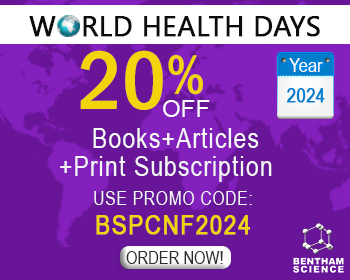Abstract
Traditional Chinese Medicine (TCM) is one of the ancient and most accepted alternative medicinal systems in the world for the treatment of health ailments. World Health Organization recognizes TCM as one of the primary healthcare practices followed across the globe. TCM utilizes a holistic approach for the diagnosis and treatment of cancers. The tumor microenvironment (TME) surrounds cancer cells and plays pivotal roles in tumor development, growth, progression, and therapy resistance. TME is a hypoxic and acidic environment that includes immune cells, pericytes, fibroblasts, endothelial cells, various cytokines, growth factors, and extracellular matrix components. Targeting TME using targeted drug delivery and nanoparticles is an attractive strategy for the treatment of solid tumors and recently has received significant research attention under precise medicine concept. TME plays a pivotal role in the overall survival and metastasis of a tumor by stimulating cell proliferation, preventing the tumor clearance by the immune cells, enhancing the oncogenic potential of the cancer cells, and promoting tumor invasion. Hepatocellular Carcinoma (HCC) is one of the major causes of cancer-associated deaths affecting millions of individuals worldwide each year. TCM herbs contain several bioactive phytoconstituents with a broad range of biological, physiological, and immunological effects on the system. Several TCM herbs and their monomers have shown inhibitory effects in HCC by controlling the TME. This study reviews the fundamentals and applications of targeting strategies for immunosuppressing TME to treat cancers. This study focuses on TME targeting strategies using TCM herbs and the molecular mechanisms of several TCM herbs and their monomers on controlling TME.
Keywords: Traditional chinese medicine, Immunosuppressing, Targeting strategies, Tumor microenvironment, Hepatocellular carcinoma, Immunomodulation, Angiogenesis inhibitors.
[http://dx.doi.org/10.1001/jamaoncol.2019.2996] [PMID: 31560378]
[http://dx.doi.org/10.2174/2213988501812010009] [PMID: 30069430]
[http://dx.doi.org/10.1002/ijc.29210] [PMID: 25220842]
[http://dx.doi.org/10.21037/jgo.2017.03.14] [PMID: 28480063]
[http://dx.doi.org/10.1016/S0140-6736(16)30579-7] [PMID: 27394647]
[http://dx.doi.org/10.3390/ijms18020405] [PMID: 28216578]
[http://dx.doi.org/10.1038/cdd.2017.161] [PMID: 29099483]
[http://dx.doi.org/10.14694/EDBK_175561] [PMID: 28561705]
[http://dx.doi.org/10.1186/s13045-019-0739-0] [PMID: 31142326]
[http://dx.doi.org/10.1016/j.semcancer.2010.10.007] [PMID: 20946957]
[http://dx.doi.org/10.3390/ijms20040840] [PMID: 30781344]
[PMID: 24778010]
[http://dx.doi.org/10.1016/j.amjoto.2010.07.019] [PMID: 20947211]
[http://dx.doi.org/10.3390/ijms20194719] [PMID: 31547627]
[http://dx.doi.org/10.1016/j.csbj.2018.11.004] [PMID: 30581539]
[http://dx.doi.org/10.5772/65319]
[http://dx.doi.org/10.1242/jcs.116392] [PMID: 23420197]
[http://dx.doi.org/10.1007/s00018-017-2686-7] [PMID: 29032503]
[http://dx.doi.org/10.1002/jcp.27782] [PMID: 30520029]
[http://dx.doi.org/10.3390/molecules24010009] [PMID: 30577495]
[http://dx.doi.org/10.3389/fcell.2015.00033] [PMID: 26075202]
[http://dx.doi.org/10.1016/j.ccr.2014.05.016] [PMID: 24898549]
[http://dx.doi.org/10.3390/cancers11101532] [PMID: 31636245]
[http://dx.doi.org/10.2174/1568026617666170224121008] [PMID: 28240179]
[http://dx.doi.org/10.18632/oncotarget.3520] [PMID: 25860935]
[http://dx.doi.org/10.3389/fonc.2014.00004] [PMID: 24551591]
[http://dx.doi.org/10.1016/j.ejps.2012.12.006] [PMID: 23262059]
[http://dx.doi.org/10.1038/s41416-018-0327-z] [PMID: 30413828]
[http://dx.doi.org/10.1016/j.ccell.2019.08.007] [PMID: 31588021]
[http://dx.doi.org/10.3748/wjg.v24.i31.3500] [PMID: 30131656]
[http://dx.doi.org/10.1038/ncomms15620] [PMID: 28555668]
[http://dx.doi.org/10.1016/j.it.2003.10.002] [PMID: 14644137]
[http://dx.doi.org/10.3892/ol.2018.7946] [PMID: 29552120]
[http://dx.doi.org/10.1159/000481246] [PMID: 29258072]
[http://dx.doi.org/10.1111/1759-7714.12270] [PMID: 26445604]
[http://dx.doi.org/10.1016/S2095-4964(17)60345-5] [PMID: 28659232]
[http://dx.doi.org/10.1155/2013/302426]
[http://dx.doi.org/10.3892/br.2015.537] [PMID: 26870326]
[http://dx.doi.org/10.1016/j.gendis.2019.10.016] [PMID: 32884991]
[http://dx.doi.org/10.1016/j.joim.2018.05.002] [PMID: 29891180]
[http://dx.doi.org/10.13005/ojc/31.Special-Issue1.33]
[http://dx.doi.org/10.4103/2395-3977.159538]
[http://dx.doi.org/10.1155/2017/3428253]
[http://dx.doi.org/10.1111/1750-3841.12518] [PMID: 25041540]
[http://dx.doi.org/10.1016/j.molimm.2017.12.002] [PMID: 29233542]
[http://dx.doi.org/10.1016/j.cellimm.2014.03.002] [PMID: 24681514]
[http://dx.doi.org/10.1016/j.coi.2013.05.016] [PMID: 23806201]
[http://dx.doi.org/10.4137/BMI.S585]
[http://dx.doi.org/10.3390/vaccines1040527] [PMID: 26344346]
[http://dx.doi.org/10.1002/cam4.1700] [PMID: 30039553]
[http://dx.doi.org/10.1016/j.trecan.2017.07.005] [PMID: 28867169]
[http://dx.doi.org/10.1016/j.jep.2019.112524] [PMID: 31884032]
[http://dx.doi.org/10.1016/j.biopha.2018.03.063] [PMID: 29710529]
[http://dx.doi.org/10.1186/s12885-019-5471-1] [PMID: 30922248]
[http://dx.doi.org/10.1007/s12013-013-9724-3] [PMID: 23975599]
[http://dx.doi.org/10.3892/ol.2019.9946] [PMID: 30867790]
[http://dx.doi.org/10.1155/2019/9549315] [PMID: 30766614]
[http://dx.doi.org/10.1158/1078-0432.CCR-16-3122] [PMID: 28341752]
[http://dx.doi.org/10.1186/s12967-015-0465-5] [PMID: 25889022]
[http://dx.doi.org/10.1186/2045-3701-1-29] [PMID: 21880137]
[http://dx.doi.org/10.1038/nrc1231] [PMID: 14737122]
[http://dx.doi.org/10.1155/2019/3815786]
[http://dx.doi.org/10.3389/fcell.2019.00086] [PMID: 31334229]
[http://dx.doi.org/10.1016/j.canlet.2014.10.021] [PMID: 25449435]
[http://dx.doi.org/10.1002/ijc.28421] [PMID: 23929039]
[http://dx.doi.org/10.1158/0008-5472.CAN-16-1297] [PMID: 27251085]
[http://dx.doi.org/10.1186/1472-6882-13-65] [PMID: 23506655]
[http://dx.doi.org/10.3892/mmr.2018.9023] [PMID: 29845189]
[http://dx.doi.org/10.1158/1078-0432.CCR-18-1254] [PMID: 30274981]
[http://dx.doi.org/10.2147/HP.S93413] [PMID: 27774485]
[http://dx.doi.org/10.3390/cancers11030316] [PMID: 30845711]
[http://dx.doi.org/10.3390/biomedicines5020034] [PMID: 28635679]
[http://dx.doi.org/10.1016/j.ejphar.2015.02.015] [PMID: 25720342]
[PMID: 20127012]
[http://dx.doi.org/10.18240/ijo.2019.11.05] [PMID: 31741856]
[http://dx.doi.org/10.1038/srep21010] [PMID: 26867799]
[http://dx.doi.org/10.3390/ijms20174136] [PMID: 31450627]
[http://dx.doi.org/10.18632/oncotarget.24282] [PMID: 29507693]
[http://dx.doi.org/10.4103/2225-4110.124326] [PMID: 24872929]
[http://dx.doi.org/10.1002/ptr.2390] [PMID: 18350509]
[http://dx.doi.org/10.20517/2394-5079.2015.59]
[http://dx.doi.org/10.3892/ol.2018.7988] [PMID: 29552121]
[http://dx.doi.org/10.1038/s12276-018-0159-1] [PMID: 30315182]
[http://dx.doi.org/10.3892/ol.2017.6059] [PMID: 28599504]
[http://dx.doi.org/10.1016/j.phymed.2020.153174] [PMID: 31991293]
[http://dx.doi.org/10.1007/s00204-002-0346-6] [PMID: 12107653]
[http://dx.doi.org/10.1038/srep31298] [PMID: 27503760]
[http://dx.doi.org/10.3892/ol.2016.4686] [PMID: 27446394]
[http://dx.doi.org/10.4103/0253-7613.91872] [PMID: 22345875]
[http://dx.doi.org/10.1186/s12929-018-0464-y] [PMID: 30086759]
[http://dx.doi.org/10.3748/wjg.v17.i31.3605] [PMID: 21987607]
[http://dx.doi.org/10.1016/j.jep.2013.07.030] [PMID: 23916858]
[http://dx.doi.org/10.1016/S2095-4964(14)60038-8] [PMID: 25074882]
[http://dx.doi.org/10.1007/978-94-017-7405-5_5]
[PMID: 31312366]



























